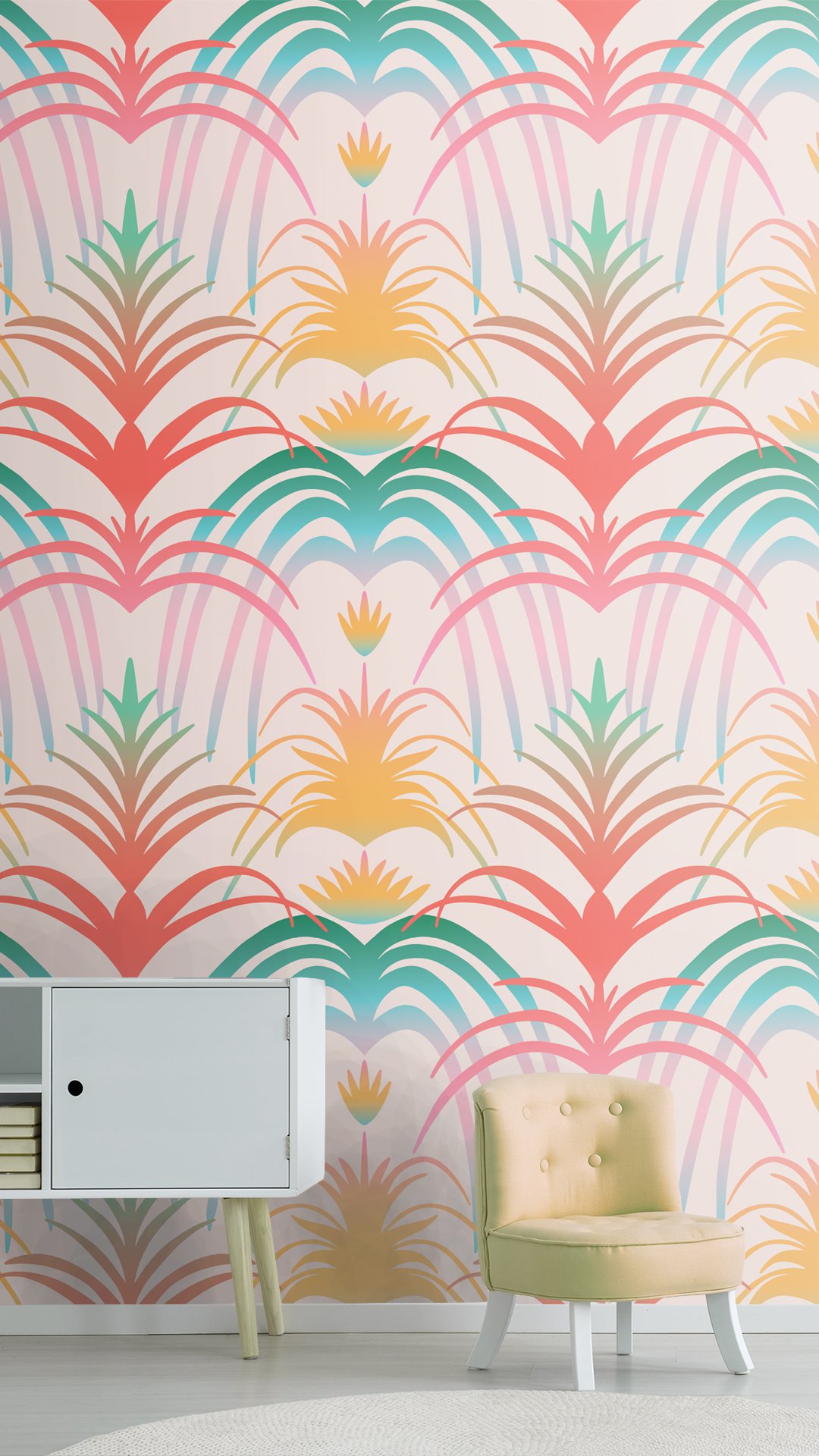1. Make sure the received wallpapers fully match your order. Lay out the panels on the floor and align them using the numbers on the back of each panel.

2. Prepare the necessary tools. You will need:
a roller for applying adhesive
a bucket for the adhesive
a seam roller
a brush for applying adhesive
a tape measure
a utility knife
a dry cloth
a level
a pencil
adhesive for non-woven wallpapers

3. Using a tape measure, measure the width of the strip and carefully, using a builder’s level and a pencil, mark vertical marks on the wall under each strip.
4. Apply an even layer of adhesive to the wall using a roller.

5. Wallpapers are mounted sequentially, starting with the first strip and then in ascending order of the numbers marked on the back of the wallpapers. Carefully apply the first strip to the wall according to the pencil marks where the adhesive was applied. When the strip lies precisely along the marked lines, smooth the wallpaper with a rubber roller.

6. To apply the second strip, apply adhesive to the wall surface again and carefully apply the second strip, aligning the pattern. Do not rush to press the canvas with a roller. Attach to the wall with light movements, and only then go over the wallpapers with a rubber roller.
7. There is no need to fill the joints; they should be smoothed out with a roller. If the adhesive gets on the front side, carefully remove it with a clean cloth.
8. Excess wallpaper on the edges can be trimmed with a utility knife.
1. Design layout:
installation should be carried out according to the design layout
each tile is numbered from first to last
We recommend laying the tiles on the floor after unpacking to understand the installation sequence.

2. Tile size:
size of each tile in a batch may vary by 1–3 mm due to manufacturing characteristics

3. Damage during unloading:
If the tile was damaged during unloading, please let us know the number of the damaged tile, and we will remake it for you

4. Front side of the tile:
when laying the tiles, try to avoid getting tile adhesive on the front side of the tiles

5. Use of a rubber trowel:
use a rubber trowel for grouting joints to avoid damaging the paint finish

6. Recommended grout:
we recommend using cement-based grout

7. Grout removal:
wipe off the grout with a soft sponge to preserve the appearance of the tiles

8. Warranty:
we provide a one-year warranty on the tiles
warranty does not cover mechanical damages such as cuts and scuffs from metal objects
By following these recommendations, you will ensure the durability and aesthetic appeal of your tiles
























 " alt="">
" alt="">







 " alt="">
" alt="">




 " alt="">
" alt="">


 " alt="">
" alt="">





